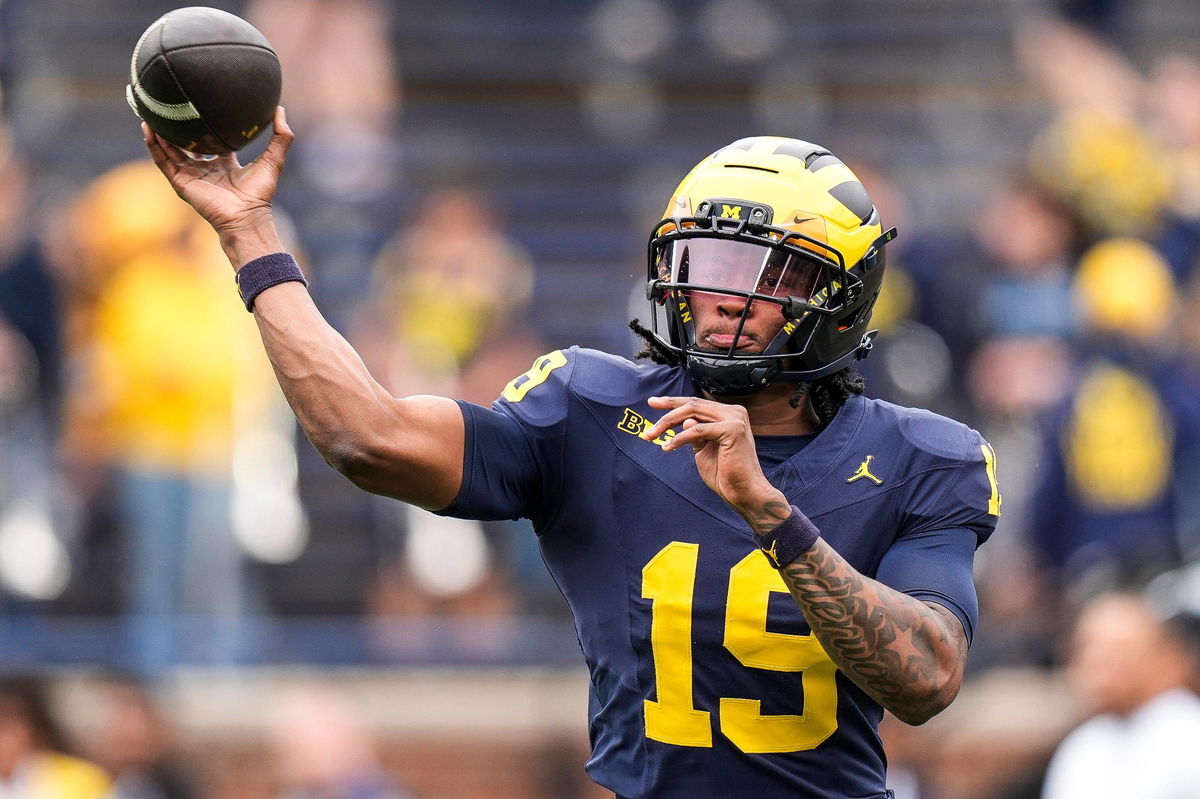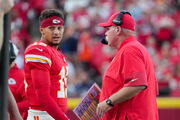
Imago
Syndication: Detroit Free Press Michigan quarterback Bryce Underwood 19 throws at warm up before the spring game at Michigan Stadium in Ann Arbor on Saturday, April 19, 2025. Detroit , EDITORIAL USE ONLY PUBLICATIONxINxGERxSUIxAUTxONLY Copyright: xJunfuxHanx USATSI_25968427

Imago
Syndication: Detroit Free Press Michigan quarterback Bryce Underwood 19 throws at warm up before the spring game at Michigan Stadium in Ann Arbor on Saturday, April 19, 2025. Detroit , EDITORIAL USE ONLY PUBLICATIONxINxGERxSUIxAUTxONLY Copyright: xJunfuxHanx USATSI_25968427
Oklahoma controlled the night, methodically imposing its tempo and field position in a 24-13 win over Michigan in Norman. Outside of a brief third-quarter surge, Michigan’s offense sputtered, repeatedly stalling in plus territory and failing to consistently win on early downs. However, something interesting happened just before halftime. Tensions flared late in the second quarter after a third-and-2 mix-up on a run-pass option, costing the team a missed shot at a touchdown with 3:22 remaining. Michigan trailed 7-0 and gave up the chance to seize momentum. Soon, teammates Bryce Underwood and Justice Haynes exchanged heated words on the sideline.
Watch What’s Trending Now!
It began on the field with Haynes motioning to Underwood after the play and escalated as the pair reached the bench area. Underwood followed Haynes, briefly grabbing the back of his jersey as they spoke, and the two had hands on each other while words flew. Injured captain Marlin Klein stepped in first, quickly joined by teammates who separated the pair as coaches refocused the huddle on the ensuing special-teams sequence.
Fortunately, concerns about lingering fallout didn’t last long. In the immediate aftermath, a prominent beat voice, Brice Marich, relayed wideout Donaven McCulley’s locker-room perspective, which framed the moment as routine competitive friction rather than a rupture. “#Michigan WR Donaven McCulley says it wasn’t a big problem with the sideline moment with QB Bryce Underwood and RB Justice Haynes,” he wrote on X. That concise message helped reset the narrative around the clip circulating online, shifting attention back to situational execution and communication.
ADVERTISEMENT
Underwood was 5-for-10 for 76 yards passing in the first half of the game. On the other hand, Haynes went 36 yards on 12 carries. However, the RB broke loose in the first play of the third quarter after cutting to his left and going untouched 75 yards. That cut the deficit to 14-7.
#Michigan WR Donaven McCulley says it wasn’t a big problem with the sideline moment with QB Bryce Underwood and RB Justice Haynes.
— Brice Marich (@BriceMarich) September 8, 2025
While the Wolverines eventually lost the game, the fallout between Haynes and Underwood didn’t have any lasting effects. Post the game, the former told the media: “We’re just competitors. We want to do what’s best for the team. We good; that’s my brother. I love him. We’re going to be just fine. Just a miscommunication. We all good.” In fact, even HC Sherrone Moore called it a simple “communication error” and downplayed the incident.
ADVERTISEMENT
All that being said, their offensive issues cannot be downplayed. At least, Shannon Sharpe believes so.
ADVERTISEMENT
Shannon Sharpe’s blunt criticism
Shannon Sharpe highlighted Michigan’s offensive issues at Oklahoma, zeroing in on slow‑developing designs and third‑down execution during a 24‑13 defeat that featured a 3‑for‑14 conversion rate in money situations. “They’re running them slow, developing a— pulling plays in the backside in chasing it down. I’m like, ‘Bro, you cannot run that against this team because they’re going to chase it. They’re going to chase it down every time.’ I mean, they were stopping the guy in the backfield for two to three-yard losses every time,” he said.
His criticism matched what played out: Oklahoma’s front repeatedly chased down concepts from the backside and squeezed time on play‑action, forcing hurried reads and drive‑killing losses. The broader pattern, a disjointed plan and limited early‑down wins, left Michigan unable to sustain offense beyond Justice Haynes’ second‑half spark, which the Sooners ultimately absorbed.
Top Stories
J. J. McCarthy Awaits Punishment From Vikings After Rejecting Kevin O’Connell’s Instructions

Prayers Pour In as South Carolina HOFer QB Dies at 52

Patrick Mahomes Doesn’t Hold Back in Emotional Statement After Chiefs QB’s Troubling Knee Injury Update

Andy Reid Announces Patrick Mahomes’ Injury Diagnosis as Chiefs HC Doesn’t Hold Back After Playoffs Elimination

Dale Jr. Warns of Deeper Issues as Joe Gibbs Parts Ways With Decade-Long Executive

Chase Elliott’s Popularity Hits New Low as Dale Jr.’s Daytona 500 Return Triggers Record-Breaking Sale

With Central Michigan up next on September 13, the Wolverines will need to clean up their communication. What do you think?
ADVERTISEMENT
ADVERTISEMENT
ADVERTISEMENT
ADVERTISEMENT

